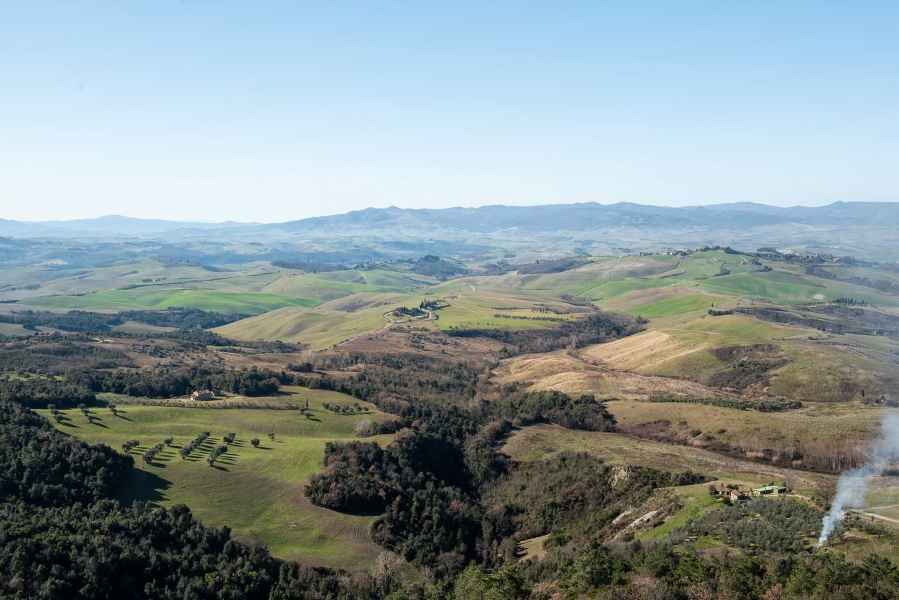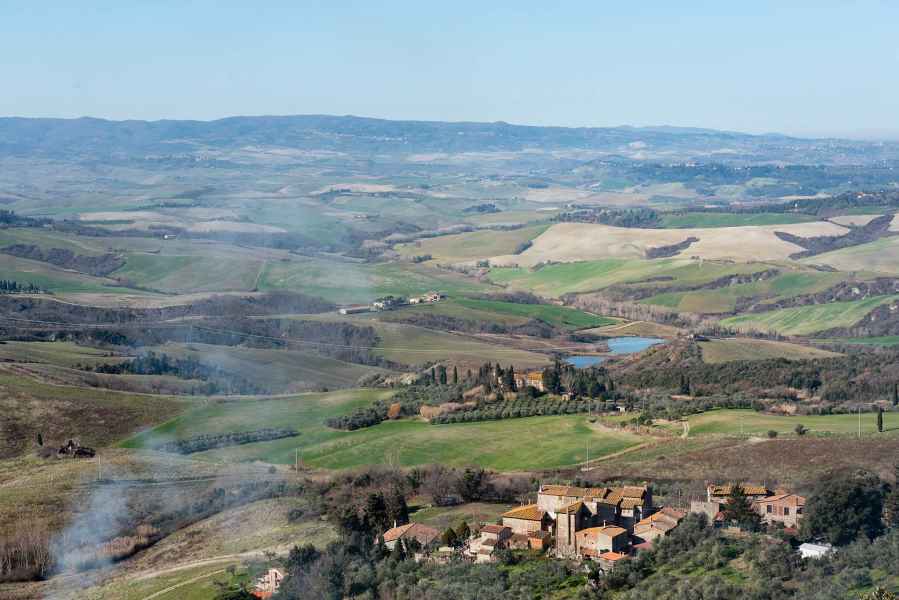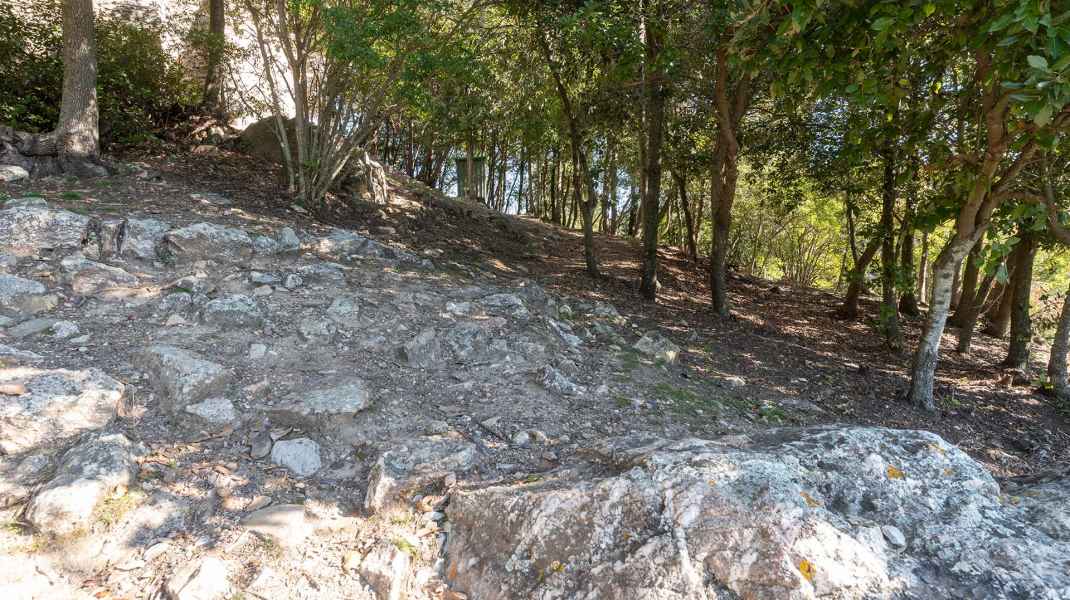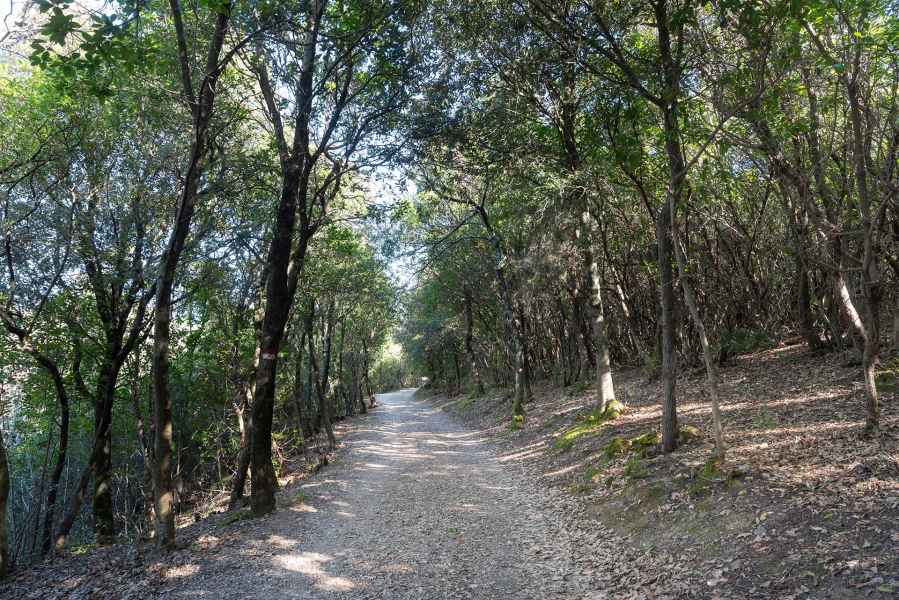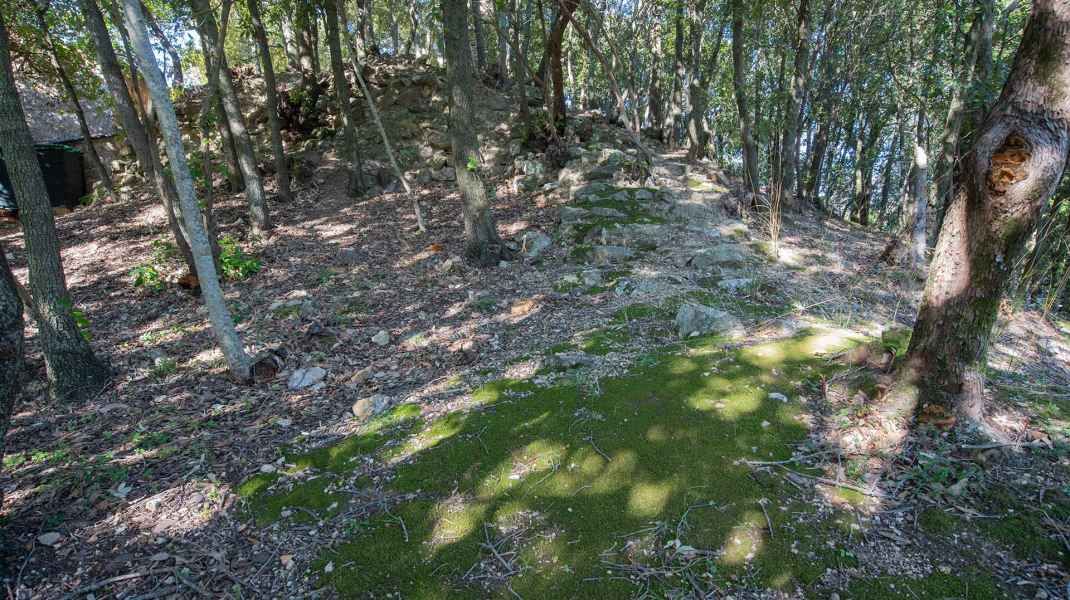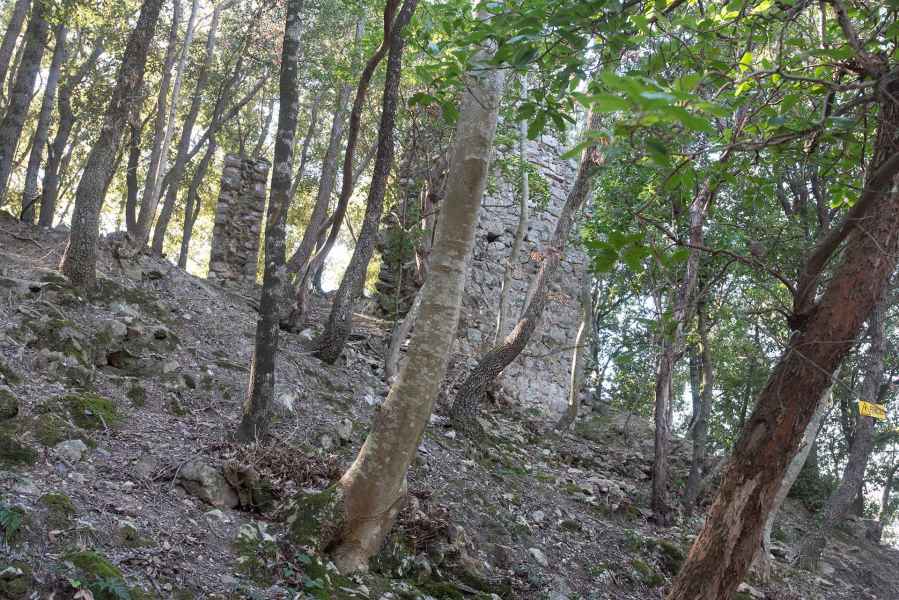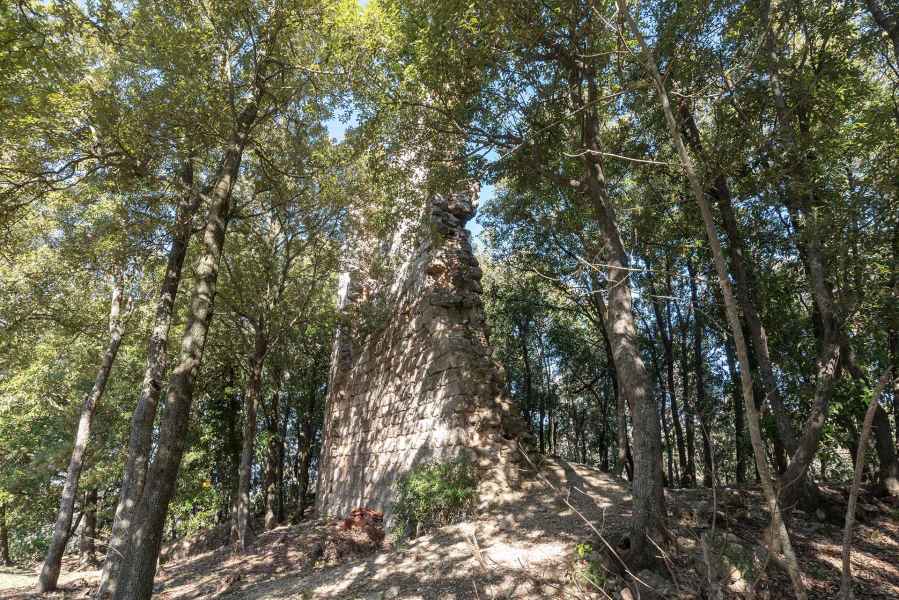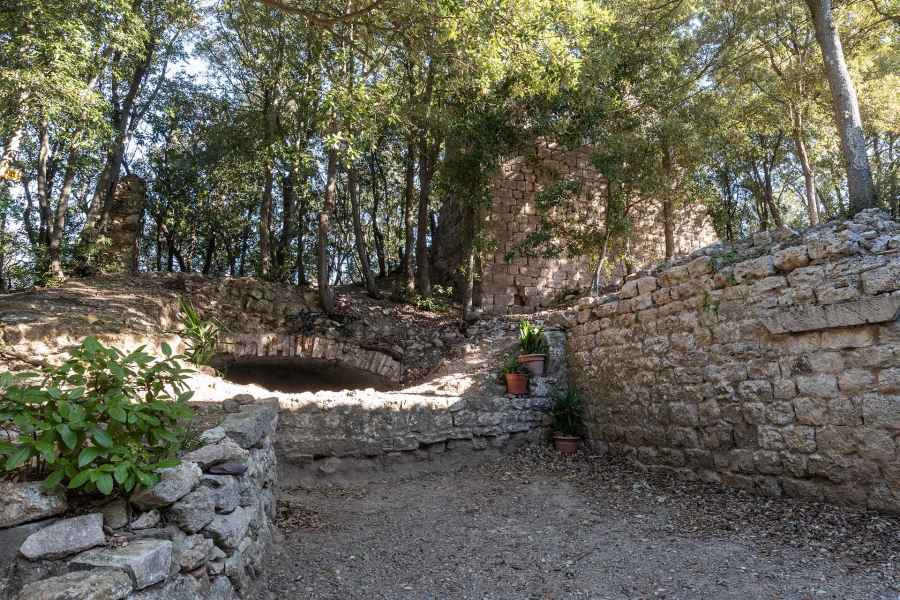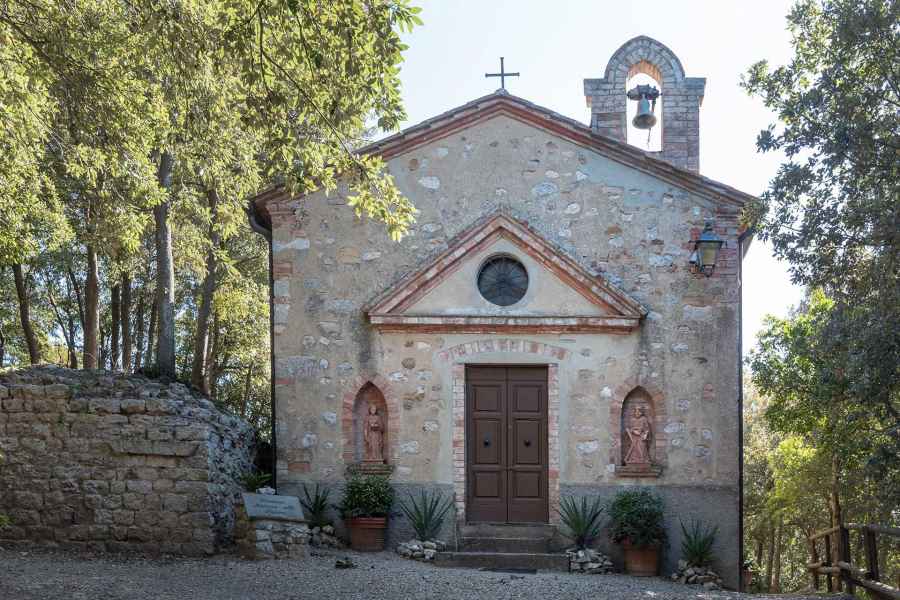The place that Leonardo indicates on map RLW 122278 with the toponym "pietra", depicted as a fortified village on the right bank of the river Elsa, must be identified with the ruins of the castle visible today in Pietrina, in the municipality of Montaione. During Leonardo’s time, this place must have had the typical appearance of a small castle defended by walls. Its origins, in fact, date back to the central centuries of the Middle Ages, when the castle appears in written sources under the name "de petra".
A private document from the year 1118, drawn up in the parish church of San Gimignano, makes reference to the small castle of the Val d'Elsa. There is mention of a house situated "in castro de petra" and a second house that was, rather, in the "burgo" of the same castle. This is the first attestation in written documents of the Castle of Pietra which, therefore, already existed at the beginning of the 12th century and also had a village outside the castrum. The two houses were donated to the parish church and to the rectory of the parish church of San Gimignano, with which the donor family evidently had quite close relations. At that time the castle must have been dependent on the bishopric of Volterra (as also the nearby Montignoso, the "old" castle of Gambassi, and San Gimignano itself). The same personages who appear as owners of houses in the village and in the castle de Petra belonged to one of the families of the minor aristocracy of the area linked to the bishop of Volterra. During the first half of the 12th century, in fact, the bishop of Volterra was engaged in the politics of conserving his possessions that were threatened, at that time, by a multiplicity of subjects. Among these, the exponents of the greater aristocracy—the noble houses of the Alberti and the Guidi—which, as is known, claimed various rights over the castles of the Valdelsa.
In the second half of the 12th century, the castle of Pietra, like the nearby Montignoso, in which we see two branches of the same noble family active, were at the center of the interests of new and rapidly rising powers. In particular, the cities of Pisa and Volterra, which at that time were consolidating their territories to the detriment of the possessions of the bishop of Volterra. The privilege granted by Frederick I to the consuls of Pisa in 1162 shows that control of the city in the direction of the Valdarno had reached the Val d'Egola, with the castles of Barbialla, Collegalli, and Montignoso. The ambitions of the city of Pisa found a new legitimization from the emperor in 1191, with the confirmation of the long list of castles granted in fief to the faithful allies of Pisa. Among the castles of the Valdarno area it is worth mentioning that of Petra Raminga, which can be identified with our castle de Petra. In the same years this part of the Val d'Egola entered within the sights of another subject in strong ascent, the young and ambitious universitas of San Gimignano. At the end of the 12th century the episcopal castle of San Gimignano had begun to erode the prerogatives of its ancient lord. Within a few decades the young town of San Gimignano obtained the jurisdiction of many of the bishop's castles, among which was the castle of Pietra. The control of this castle, together with that of Montignoso, was of fundamental importance for the management of transits along the transversal paths to the Elsa and Era valleys, which connected San Gimignano and the main villages of the Valdelsa to the sea (Pisa). The document mentioning the right of passadium (right of transit)—still collected in the middle of the 13th century along the road to Pisa and due, with act of submission from the men of castel di Pietra and Montignoso, to the municipality of San Gimignano—should be interpreted in this perspective. The history of this small castle thus follows, in subsequent centuries, the events of the town of San Gimignano and in particular those that saw the important village of the Valdelsa entering definitively, in 1370, into the orbit of the city of Florence.
Some portions of the ancient castle de Petra now in ruins can be seen on the site where the "La Pietrina" Sanctuary is today, near the locality of Palagio, in the municipality of Montaione. On the summit of the small wooded hill, the stretches of walls in thin lines of rough cut pietra alberese delineate some of the castle spaces. From the statutes of the municipality of San Gimignano dating from the beginning of the 14th century, we learn that inside the Castle of Pietra, the construction of a house had been arranged for the castellan, sent on behalf of the municipality itself, to stay on site. The castle, however, must already have been provided with a boundary wall and a keep, probably the reduced fortification with towers whose traces remain on the highest part of the hill, together with the remains of a cistern for water storage. Inside the castle, a church was built dedicated to Saints Andrea and Agata. The castle church is mentioned for the first time in 1234, on the occasion of the appointment by the monks of the two Camaldolese foundations of Badia a Elmi and San Mariano, its area dependency, of the rector for the nearby castle of Montignoso. In fact, at the beginning of the 13th century, what was defined as a genuine "Camaldolese district" was in a nascent state in this sector of the Valdelsa, coordinated by the ancient monasteries of Adelmo (Badia a Elmi) and San Pietro a Cerreto, both built around in the middle of the 11th century on the left bank of the Elsa. From the point of view of the ecclesiastical organization of the territory, the "de Pietra" castle church was part of the parish church of Montignoso ("Ecclesia de Petra", year 1302-1303, Tuscia II, p. 209). The small community, which in the 15th century still depended on the castle parish, for the Florentine tax authorities, had no fewer than nine families, for a total of more than 50 individuals residing at the location. If Leonardo, at the beginning of the 16th century, represented the small town of "Pietra" with a wall circuit defended by towers, it is probable that, at that point in time, it still retained much of its early medieval defensive structure, and therefore the appearance of the small turreted castle appearing in Leonardo’s drawing.
Texts by
Silvia Leporatti / English translation by John Venerella
Related resources
Related places
Gallery
Error
Related resources
Related places
Gallery






